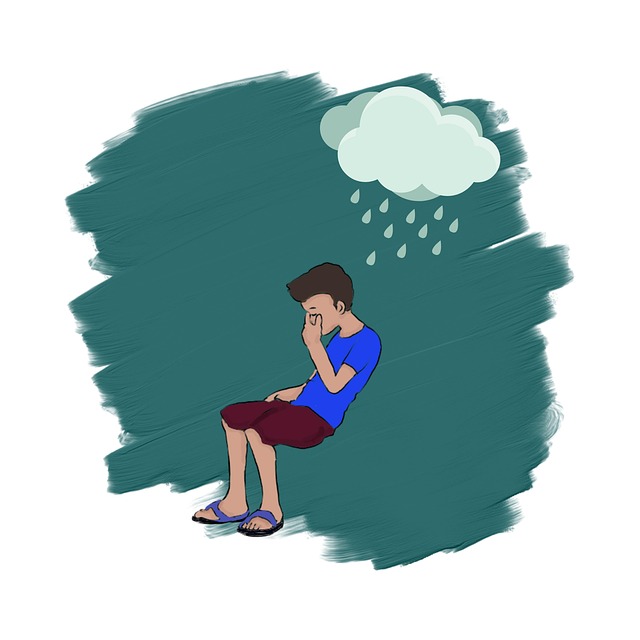Journaling for Mental Wellness: Longmont Terminal Illness Therapy Guidance
Longmont Terminal Illness Therapy emphasizes the vital role of mental wellness in managing terminal…….
In a world where healthcare is constantly evolving, Longmont Terminal Illness Therapy (LTIT) has emerged as a transformative approach, offering hope and improved quality of life for patients facing terminal illnesses. This therapy goes beyond traditional end-of-life care, focusing on holistic support to enhance the remaining time for patients and their loved ones. This article aims to provide an in-depth exploration of LTIT, its various aspects, global reach, and its profound impact on healthcare systems worldwide. By delving into these topics, we hope to shed light on why this therapy is not just a medical practice but a movement towards compassionate end-of-life care.
Definition: Longmont Terminal Illness Therapy refers to a comprehensive treatment and support system designed for individuals with terminal illnesses, aiming to improve their overall well-being during the advanced stages of life. It involves a multidisciplinary team of healthcare professionals, caregivers, and community resources working together to address physical, emotional, social, and spiritual needs.
Core Components:
Historical Context: The concept of LTIT has evolved over the past few decades, drawing inspiration from palliative care movements that gained prominence in the mid-20th century. Early models focused primarily on symptom management, but with advancements in healthcare, the approach broadened to include a more holistic perspective. This shift was influenced by increasing awareness of patients’ needs beyond medical treatment and a desire to provide better support for terminally ill individuals and their families.
Significance: Longmont Terminal Illness Therapy is significant because it recognizes that receiving a terminal diagnosis is a profound and life-changing event. By offering comprehensive care, it ensures that patients have access to resources that address the unique challenges they face. This therapy aims to:
International Influence: Longmont Terminal Illness Therapy has gained global recognition and adoption, shaping end-of-life care practices worldwide. Its influence is evident in various countries, each adapting the model to suit its healthcare systems and cultural contexts. For instance:
Key Trends Shaping LTIT:
Regional Variations: Different regions face unique challenges that influence the implementation of LTIT. For example:
| Region | Challenge | Strategy |
|---|---|---|
| Low-Income Countries | Limited access to specialized palliative care professionals | Training local healthcare workers in basic palliative care skills and promoting community-based support groups |
| Rural Areas | Scarcity of resources and specialists | Developing mobile clinics and online resources, fostering partnerships with community organizations |
| High-Income Nations | Ensuring equitable access | Implementing policies to fund LTIT services for all patients, regardless of socioeconomic status |
Market Dynamics: Longmont Terminal Illness Therapy represents a significant market opportunity within the healthcare industry. The global palliative care market, which includes LTIT services, is projected to grow at a CAGR of 7.8% from 2022 to 2030 (Source: Grand View Research). This growth is attributed to increasing terminal illness diagnoses and a rising awareness of the benefits of holistic end-of-life care.
Investment Patterns: Healthcare investors have shown a growing interest in LTIT, recognizing its potential to improve patient outcomes and reduce long-term healthcare costs. Funding is often directed towards:
Economic Impact: The economic implications of LTIT are multifaceted:
Digital Tools and Platforms: Technology plays a pivotal role in modernizing Longmont Terminal Illness Therapy. Several digital innovations have emerged to support patients, caregivers, and healthcare providers:
Impact on LTIT: Technological advancements have enhanced the following aspects of LTIT:
Future Potential: The future holds immense potential for technology in LTIT:
Global Policies: The development of LTIT is influenced by various international policies and guidelines aimed at improving end-of-life care:
Legislative Frameworks: Local and national governments play a crucial role in shaping LTIT through legislation:
Impact on Practice: Policy and regulatory interventions have significant effects on LTIT:
Main Challenges: Despite its many benefits, Longmont Terminal Illness Therapy faces several challenges:
| Challenge | Description |
|---|---|
| Stigma and Misunderstanding: Terminal illness and end-of-life care still carry social stigmas in some cultures, hindering open discussions and access to LTIT. | Overcoming these attitudes requires education and community engagement initiatives. |
| Inadequate Training: Healthcare professionals may lack specialized training in palliative care, limiting their ability to provide comprehensive LTIT services. | Implementing mandatory training programs and continuing education can address this gap. |
| Funding and Resource Allocation: Insufficient funding and resource allocation can hinder the development and accessibility of LTIT services, especially in underserved communities. | Advocacy and policy changes are needed to ensure equitable access to LTIT resources. |
| Integration with Existing Systems: Integrating LTIT into existing healthcare systems can be complex, requiring collaboration between various stakeholders. | Streamlined processes and standardized protocols facilitate smoother integration. |
Criticisms and Actionable Solutions: Some criticisms of LTIT include:
Case Study 1: Community-Based LTIT in rural America
In a small rural town in the Midwest, a local healthcare organization implemented a community-based LTIT program to address the unique challenges faced by terminally ill residents. The initiative involved:
Impact: Within two years, the program achieved:
Case Study 2: Digital LTIT for Urban Patients
A major urban hospital in Asia launched a digital LTIT program to improve access and engagement for patients with limited mobility or social support. The program utilized:
Outcomes: The digital initiative resulted in:
Growth Areas: The future of Longmont Terminal Illness Therapy holds immense potential in several key areas:
Strategic Considerations: To capitalize on these trends, healthcare organizations and policymakers should:
Longmont Terminal Illness Therapy represents a holistic and compassionate approach to caring for patients with terminal illnesses. Technological advancements, global collaborations, and supportive policies are reshaping the future of LTIT, improving patient outcomes and enhancing quality of life. As awareness and acceptance grow, LTIT will play an increasingly vital role in ensuring that individuals receive respectful, efficient, and effective end-of-life care tailored to their unique needs and preferences.

Longmont Terminal Illness Therapy emphasizes the vital role of mental wellness in managing terminal…….